When you think about the different types of houses in Nigeria, you’ll quickly realize that the country’s architectural diversity is as rich as its culture. From the clay-walled huts in rural communities to the towering duplexes and smart homes in modern cities, Nigerian homes reflect history, creativity, and lifestyle.
Every region in Nigeria has its own unique housing design, shaped by tradition, environment, and economic status. In the north, you’ll find the iconic Hausa mud compounds that stay cool even in hot weather. In the southwest, traditional Yoruba compounds tell stories of unity and family heritage. Meanwhile, the southern and eastern parts of Nigeria are filled with bungalows, duplexes, and luxurious mansions that blend local and foreign designs beautifully.
Today, Nigeria’s housing landscape combines traditional styles with modern innovations, giving rise to a variety of home types that suit different tastes, budgets, and environments. Whether you’re planning to build your dream home, explore cultural architecture, or simply curious about the different types of houses in Nigeria, this guide will open your eyes to different fascinating options — complete with names, pictures, and unique features.
So, grab a seat and let’s tour through Nigeria’s most popular house types — from ancient designs that shaped our ancestors’ lives to the sleek, smart buildings defining the country’s future.
Also Check: Fun Places to Visit in Abuja: Best Spots for Relaxation, Food, Adventure, & More
Overview of Housing in Nigeria
The housing system in Nigeria is a true reflection of its people — diverse, adaptive, and full of creativity. Over the years, the country has witnessed a major transformation in how homes are built, designed, and lived in. From traditional huts made of mud and thatch to modern duplexes with marble floors and smart home technology, the evolution of Nigerian housing tells a fascinating story.
Decades ago, most types of houses in Nigeria were constructed using locally available materials like red earth, bamboo, palm fronds, and wood. These homes were simple yet practical, designed to withstand the country’s tropical climate. In rural areas, houses were often built in clusters, forming family compounds that encouraged communal living — a core part of Nigerian culture.
As cities like Lagos, Abuja, and Port Harcourt began to expand, urbanization introduced more advanced and stylish building patterns. Cement blocks replaced mud walls, iron sheets took over from palm fronds, and high-rise apartments started springing up across major towns.
However, despite these developments, traditional architecture still holds a special place in Nigerian society. Many people still admire and even recreate old designs — combining traditional beauty with modern construction techniques. This beautiful mix of old and new is what makes the different types of houses in Nigeria so unique and exciting to explore.
The good news? This article contains the list of both the traditional types of houses, modern residential houses, and material-based or construction types of houses, giving you a clear picture of the type of houses in Nigeria. Without wasting time, let’s kickstart with traditional types of houses!
Also Check: 7 Cheap Fun Places to Hang Out in Lagos Mainland (Perfect Selection!)
Traditional Types of Houses in Nigeria (Cultural & Regional)
1. Yoruba Mud Houses

Among the Yoruba people of southwestern Nigeria, mud houses have been part of the culture for centuries. These traditional homes are built with red earth, molded into blocks or directly plastered with clay. The roofs are usually made from corrugated iron sheets or thatch, depending on the location and resources available.
A typical Yoruba mud house often has a central courtyard, surrounded by multiple rooms. This layout encourages family bonding and reflects the communal lifestyle the Yoruba people are known for. Despite modernization, some rural areas still maintain this architectural style because mud walls help regulate temperature, keeping the rooms cool even in hot weather.
These structures represent not just shelter, but a symbol of cultural identity in the long list of different types of houses in Nigeria.
2. Igbo Red Earth Houses
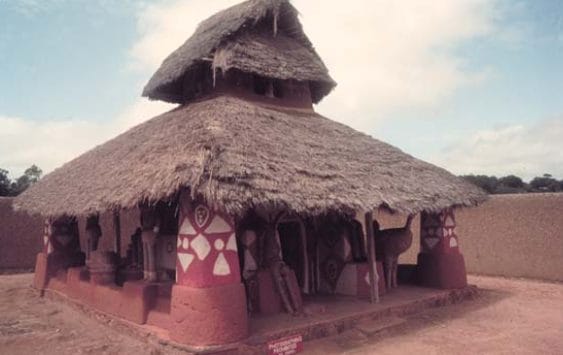
In southeastern Nigeria, the Igbo people are known for their artistic sense of building. The Igbo red earth houses are traditionally constructed with reddish laterite soil, mixed with water and straw to form thick, durable walls.
These houses often feature decorative wall carvings, traditional motifs, and sometimes cowrie shells for ornamentation. The roofs are thatched or made from zinc sheets, and the interior walls are smoothed with a mixture of clay and cow dung — a natural polish that gives them a warm, earthy look.
Although modern buildings have taken over many towns, these red earth houses still appear in villages and cultural sites, proudly representing one of the oldest types of houses in Nigeria rooted in tradition and artistry.
3. Tiv Round Thatched Houses
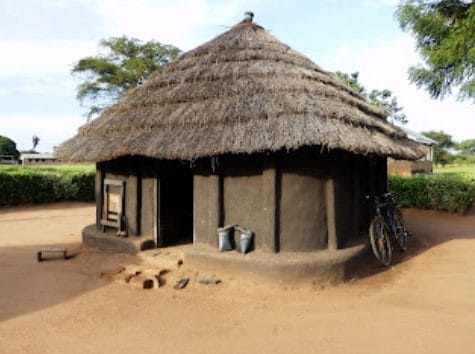
Moving to central Nigeria, the Tiv people of Benue State have long been recognized for their round thatched houses, locally called “ Iyol i Hira or Ate”.
The Iyol i Hira is made with mud and topped with conical thatched roofs made from dry grass. These houses are known for maintaining a very cool atmosphere even during hot weather. You don’t need an air condition or fan here because the houses are naturally conducive. You need to know!
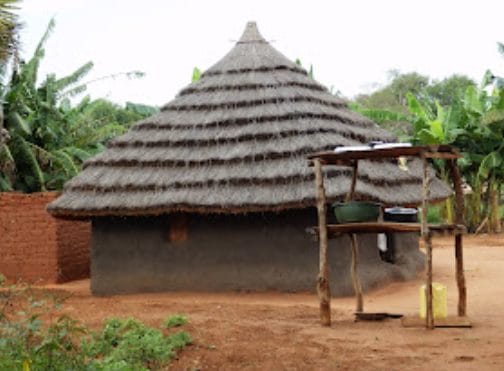
The Ate, on the other hand, is another classic building of its kind! These houses are made from wooden poles covered with mud and topped with conical thatched roofs made from dry grass.
The round shape isn’t just for beauty — it helps the house withstand strong winds and ensures even temperature inside. The Ate is often built near farms or family compounds and serves as both a resting place and a communal gathering point.
Today, Tiv round houses are celebrated for their eco-friendly design and are often used as cultural displays or guest huts in rural resorts. They stand as a living example of how traditional house types in Nigeria combine practicality with cultural pride.
4. Fulani Huts
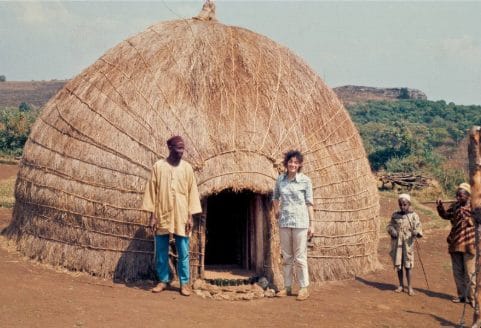
In the northern regions of Nigeria, the Fulani huts — locally called “Suudu” — are among the most recognizable traditional structures. These round huts are made using woven sticks, dry grass, and mud plaster, forming light yet sturdy walls. The conical thatched roof helps rainwater flow off easily and keeps the interior cool in the hot Sahel climate.
Since the Fulani are traditionally nomadic, their huts are designed for easy dismantling and reconstruction whenever the family migrates. Despite their simplicity, Fulani huts display fine craftsmanship and are often arranged in beautiful clusters across the savannah. They represent a perfect harmony between culture, climate, and lifestyle, making them a distinct part of the traditional types of houses in Nigeria.
5. Hausa Compound Houses
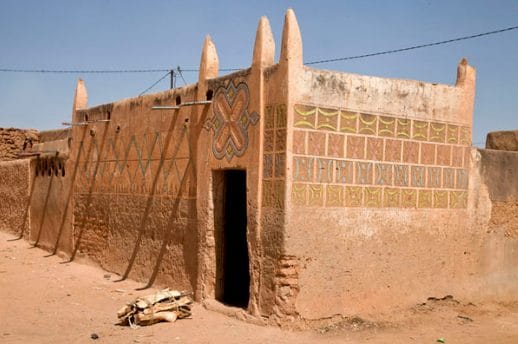
The Hausa compound houses are among the oldest and most structured forms of traditional housing in Nigeria. Built mainly from mud and laterite, these houses are designed for extended family living and arranged around a spacious central courtyard.
Each compound often includes several rooms, a kitchen area, a storage space, and sometimes a small mosque or prayer corner. The high walls surrounding the compound provide privacy and security, which are vital in Hausa culture.
Decoratively, Hausa houses are known for their beautiful geometric wall patterns and carved designs that display artistry and spiritual meaning. Even with the rise of modern buildings, the Hausa compound remains a cultural icon among the different types of houses in Nigeria that emphasize family unity and tradition.
6. Ijaw Stilt Houses (Waterfront Homes)
Along the creeks and riverine areas of the Niger Delta, the Ijaw people have mastered the art of living on water. Their homes, popularly known as stilt houses, are built above the water surface using strong wooden pillars to support the structure.
These houses are connected by narrow wooden bridges or canoes, allowing residents to move easily between homes. The design protects against flooding and swampy ground, making it both practical and impressive.
Inside, Ijaw stilt houses are simple but functional, often built from bamboo, wood, and thatch — materials that resist moisture. They reflect the resilience and creativity of the Niger Delta people and stand out as one of the most unique traditional house types in Nigeria.
7. Gwari Rectangular Houses
In central Nigeria, especially within Niger and Kaduna States, the Gwari people (also known as Gbagyi) are famous for their rectangular-shaped traditional houses. Unlike the round huts of some neighboring ethnic groups, Gwari homes are built with straight walls and flat or slightly slanted thatched roofs.
These houses are typically made from clay mixed with straw for strength and insulation. The rectangular design allows for better space management, with separate rooms for sleeping, cooking, and storage, while still keeping the family close together.
One notable feature of Gwari houses is their decorative wall painting, done with natural pigments and geometric symbols that often hold spiritual meaning. Though modernization has introduced cement-block versions, the original design remains a cherished part of Nigeria’s cultural architecture and one of the authentic traditional types of houses in Nigeria.
Also Check: How Many Plots Make an Acre in Nigeria? All You Need to Know
Modern Residential Houses in Nigeria (Urban & Suburban Types)
1. Bungalow

The bungalow is one of the most popular and practical types of houses in Nigeria, especially among middle-income earners. Typically built on a single floor, a bungalow combines comfort, simplicity, and accessibility, making it ideal for families, retirees, and individuals who prefer easy movement without staircases.
Modern Nigerian bungalows come in various styles, from the classic three-bedroom flat to luxurious four-bedroom layouts with attached garages and verandas. They often feature open living spaces, tiled floors, and large windows for ventilation.
Because of its affordability and efficient use of space, the bungalow remains a favorite across urban and rural areas. It perfectly balances modern living with traditional comfort, which is why you’ll find it in almost every Nigerian city and village.
2. Duplex

When it comes to elegance and space, the duplex stands out among the modern types of houses in Nigeria. A duplex is a two-story building that may either be fully occupied by one family or divided into two separate apartments — one on each floor.
The ground floor usually features the living room, kitchen, dining area, and guest room, while the upper floor accommodates bedrooms and sometimes a balcony. Duplexes are popular among middle and upper-class Nigerians who desire more space, privacy, and a touch of luxury.
From Lekki to Abuja and Enugu, duplexes are a common sight in estates and private residential areas. Their modern designs — combining glass walls, balconies, and smart lighting — have made them symbols of status and sophistication in Nigerian real estate.
3. Semi-Detached House
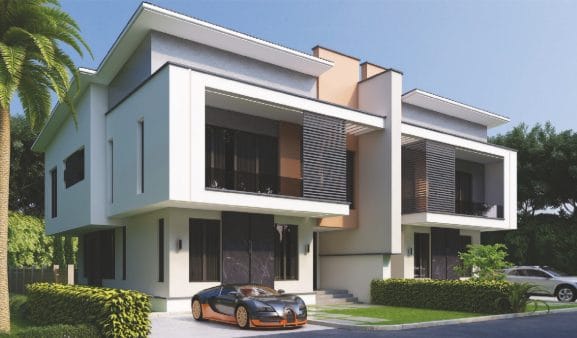
The semi-detached house is another increasingly common feature in Nigeria’s housing scene. It consists of two houses joined together by a shared wall, often with mirror-like designs on each side. This setup allows homeowners to enjoy the comfort of a standalone house while saving on land and construction costs.
Semi-detached houses are mostly found in planned estates and gated communities, offering a sense of neighborhood and security. Each unit typically has its own entrance, parking space, and backyard.
They are an excellent option for young families or property investors looking to rent out one side while living in the other. Because of this blend of affordability and luxury, the semi-detached house is gaining popularity as one of the most economical modern types of houses in Nigeria.
4. Terrace House

The terrace house (also known as a townhouse) is one of the fastest-rising modern types of houses in Nigeria, especially in densely populated cities like Lagos and Abuja. Terrace houses are built in rows, with each unit sharing side walls with the next, forming a beautiful and uniform structure.
Each terrace unit often has multiple floors, modern interiors, and small outdoor spaces such as balconies or mini gardens. They’re popular among professionals and young families who want a balance between luxury and affordability in prime urban areas.
One of the biggest advantages of terrace housing is efficient land use — it allows developers to build more units in limited space without compromising on comfort or aesthetics. Today, terrace houses are a symbol of urban sophistication, combining privacy, security, and elegance in one stylish package.
5. Mansion

When it comes to grandeur and luxury, few types of houses in Nigeria can rival the mansion. Mansions are large, multi-roomed buildings designed for comfort, prestige, and modern living. They often feature multiple lounges, expansive dining rooms, private offices, gyms, and swimming pools — sometimes spread across several floors.
You’ll find some of Nigeria’s most magnificent mansions in neighborhoods like Banana Island, Maitama, and Ikoyi, where architectural creativity meets opulence. These houses often blend foreign-inspired designs with Nigerian elements, using marble finishes, chandeliers, and high-tech home automation systems.
While only a small percentage of Nigerians can afford them, mansions stand as a strong representation of the country’s growing taste for modern, luxury housing, making them one of the most admired type of houses in Nigeria.
Also Check: 10 Simple Rules for Peaceful Living With a Roommate
6. Flat / Apartment
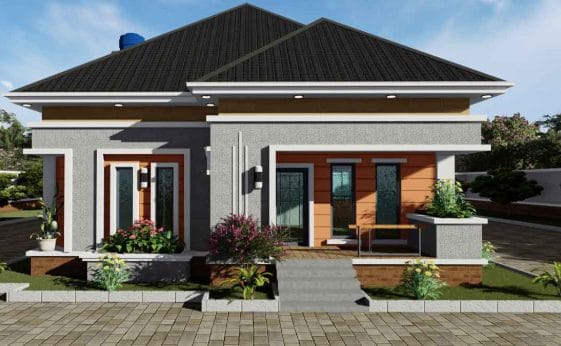
The flat, commonly referred to as an apartment, is another widely preferred type of house in Nigeria, particularly in cities with limited land space. A flat usually consists of multiple self-contained units within a multi-story building, with each unit having its own living room, kitchen, bedrooms, and bathrooms.
Flats offer affordable and flexible housing options for individuals, couples, and families. They’re common in both high-end estates and low-income neighborhoods, with variations ranging from one-bedroom mini flats to luxurious penthouse apartments.
In urban areas, apartments are often managed by landlords or real estate companies, making them a key part of Nigeria’s rental housing system. They combine convenience, security, and accessibility — reasons why the flat remains one of the most practical and in-demand types of houses in Nigeria today.
7. Self-Contain
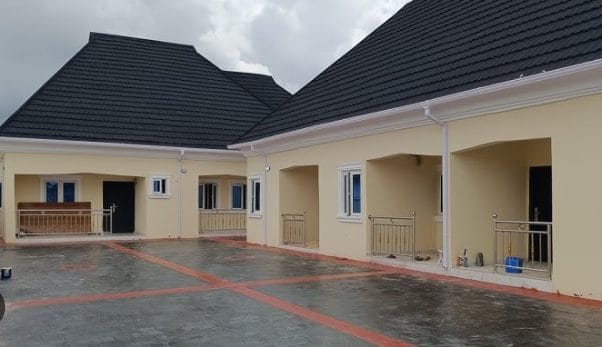
The self-contain is one of the most common and affordable types of houses in Nigeria, especially among students, young professionals, and single tenants. A self-contain is a compact apartment that includes a bedroom, bathroom, and kitchenette — all in one unit.
This type of housing is designed for privacy and convenience, giving tenants full control over their space without sharing facilities like kitchens or toilets with others. It’s often built in blocks of several units, making it a great investment option for landlords looking for consistent rental income.
Self-contained apartments are popular in both urban and semi-urban areas, from university towns like Nsukka and Makurdi to major cities like Lagos and Port Harcourt. Their affordability and independence make them a go-to choice among the modern house types in Nigeria.
8. Penthouse
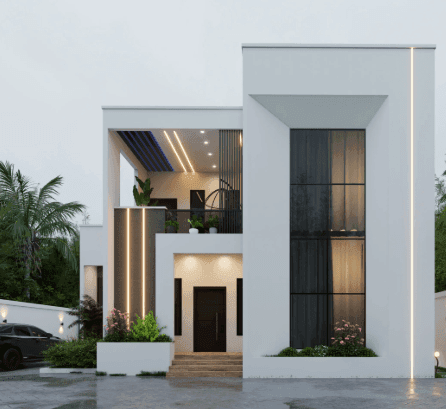
The penthouse represents the height of luxury living in Nigeria — literally and figuratively. It’s usually the topmost unit of a high-rise building or apartment complex, offering breathtaking views, extra space, and high-end amenities.
Most penthouses in Nigeria feature open-plan living areas, expansive balconies, private elevators, and stylish interior designs. They are found in upscale neighborhoods such as Victoria Island, Maitama, and Lekki Phase 1, often occupied by business executives and celebrities.
What makes the penthouse special among the types of houses in Nigeria is its exclusivity. It’s not just a home — it’s a statement of status, privacy, and modern taste in urban architecture.
9. Skyscraper Apartment
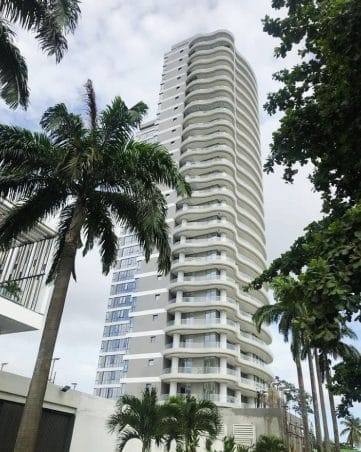
In Nigeria’s biggest cities, especially Lagos and Abuja, skyscraper apartments have started reshaping the skyline. These tall, multi-story residential buildings are designed to accommodate many families or individuals within a single vertical complex.
Each apartment unit may range from modest one-bedroom flats to luxurious duplex-style spaces within the tower. Skyscraper apartments offer residents modern facilities like elevators, 24-hour security, gyms, and rooftop lounges — giving them a taste of international city living right in Nigeria.
They are fast becoming one of the most modern and space-efficient types of houses in Nigeria, especially as urban populations grow and available land becomes limited. With their mix of comfort, convenience, and modern appeal, skyscraper apartments symbolize the future of housing in Nigeria.
Also Check: How Many Plots Make a Hectare in Nigeria? The Complete Land Size Guide
Material-Based or Construction Types of Houses in Nigeria
1. Smart House

Technology is transforming how Nigerians live, and the smart house is a perfect example of this evolution. A smart house is a technologically advanced home where most systems — lighting, security, temperature, and even appliances — can be controlled remotely using a smartphone or voice assistant.
These homes are designed for comfort, energy efficiency, and security. They often feature motion sensors, CCTV cameras, automated doors, smart lighting, and voice-controlled systems. In cities like Lagos, Abuja, and Port Harcourt, smart homes are gradually becoming a trend among the elite and tech-savvy.
Smart houses represent one of the most modern types of houses in Nigeria, combining innovation, convenience, and luxury to meet the demands of today’s digital lifestyle.
2. Mud House (Modern Version)
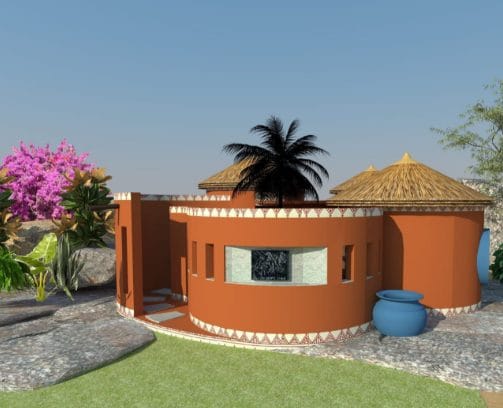
While mud houses were among the earliest traditional types of houses in Nigeria, their modern version is now gaining popularity for a surprising reason — sustainability. Builders are rediscovering the benefits of mud and clay as eco-friendly, cost-effective materials that keep homes naturally cool.
Modern mud houses in Nigeria are no longer the crude huts of the past. They’re often built with compressed stabilized earth blocks (CSEB) or clay bricks, giving them strength, smooth finishes, and a rustic, elegant look. Architects now blend mud walls with concrete and glass for a unique, natural aesthetic.
These new designs prove that even age-old materials can fit into modern living, making the mud house one of the most sustainable and climate-friendly types of houses in Nigeria.
3. Brick House
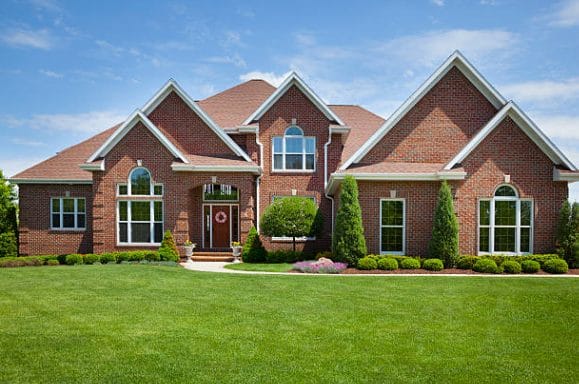
The brick house is another solid and attractive type of house in Nigeria, known for its durability and timeless beauty. Bricks — whether clay, cement, or interlocking — offer strength, soundproofing, and insulation that makes homes comfortable in both hot and rainy seasons.
Brick houses are common in cities like Ibadan, Kaduna, and Enugu, where homeowners appreciate their rustic charm and long-lasting structure. Unlike ordinary cement-block houses, brick homes don’t require frequent plastering or painting, which reduces maintenance costs.
Besides being cost-efficient, brick houses also provide an elegant appearance that fits perfectly into both traditional and modern neighborhoods. Their balance of durability and style has earned them a respected place among the different types of houses in Nigeria.
4. Cement Block House
The cement block house is undoubtedly the most common type of house in Nigeria today. From rural villages to urban estates, most modern Nigerian homes are built with sandcrete or cement blocks because they are affordable, durable, and easy to construct.
Cement block houses offer flexibility in design — they can be bungalows, duplexes, or even multi-story buildings. The blocks are made from a mixture of sand, cement, and water, molded into rectangular shapes that form strong walls capable of lasting for decades.
One major advantage of this housing type is its resistance to weather and pests, making it a reliable option in Nigeria’s tropical climate. It’s no surprise that the cement block house remains the most widely used and trusted among all types of houses in Nigeria.
5. Wooden House

Although not as widespread as cement houses, wooden houses are making a slow comeback in Nigeria due to their eco-friendliness and unique aesthetic appeal. These houses are usually built from strong, treated timber that resists termites and humidity, ensuring durability and safety.
Wooden houses are popular in riverine and forested areas such as the Niger Delta and parts of Cross River State. They’re lightweight, easy to construct, and naturally insulated — meaning they stay cooler in hot weather and warmer during the rainy season.
Also Check: 5 Signs the Land You’re Buying Might Be in an Unlawful Location
6. Container House
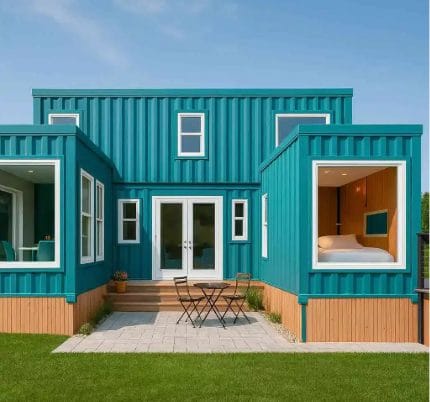
The container house is one of the newest and most innovative types of houses in Nigeria, turning ordinary shipping containers into beautiful living spaces. These homes are built using recycled steel containers that are cut, insulated, and modified into full residential structures.
Container houses are cost-effective, quick to build, and environmentally friendly. They can serve as offices, student hostels, temporary apartments, or even luxury homes depending on the design. In Lagos and Abuja, architects are experimenting with container designs that include air conditioning, solar panels, and modern interiors.
This modern style is gaining attention among young Nigerians who want something stylish yet affordable. The container house perfectly represents the fusion of creativity and sustainability in Nigeria’s growing housing industry.
7. Prefabricated House
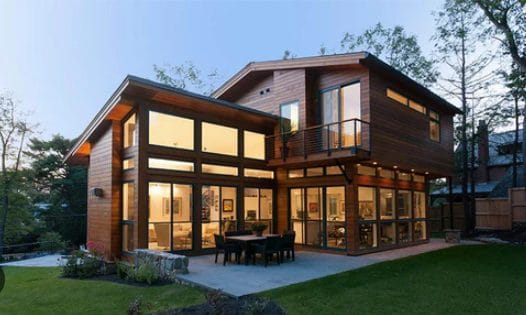
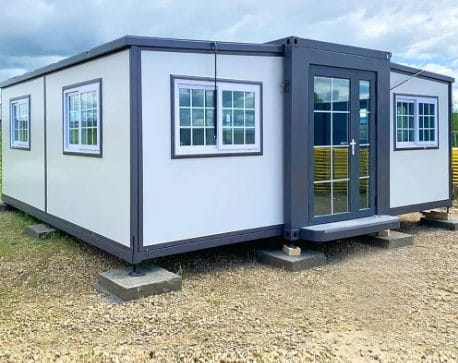
The prefabricated house, also called a modular home, is one of the most modern types of houses in Nigeria today. Unlike traditional construction that happens entirely on-site, prefab houses are built in sections (modules) inside a factory and then assembled on the property.
This method reduces waste, saves time, and ensures better quality control. Prefabricated houses are fast becoming a favorite among Nigerians living abroad who want quick, durable homes back home. They can be customized to any design — from simple bungalows to luxury villas — and are often equipped with smart home technology and solar systems.
In short, prefab housing represents efficiency, innovation, and modern living, making it one of the smartest housing choices in Nigeria today.
8. Glass House
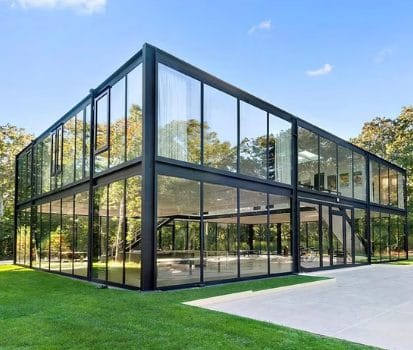
A glass house stands out as one of the most luxurious and visually stunning types of houses in Nigeria. Built with large glass panels and reinforced frames, this architectural style is popular in urban areas and high-end estates.
Glass houses create a bright, spacious feel by allowing natural light to flood every corner. They are designed with tinted or double-glazed glass to regulate heat and maintain privacy, ensuring comfort in Nigeria’s tropical climate.
While expensive to build and maintain, glass houses symbolize class, transparency, and modern elegance — the perfect blend for those who love sophisticated living. Many Nigerians now use this design for offices, hotels, or private mansions in cities like Lagos and Abuja.
9. Stone House

Among all the types of houses in Nigeria, the stone house is one of the oldest yet most durable. Traditionally found in rocky regions like Jos or parts of the Middle Belt, stone houses are built using locally sourced stones carefully stacked or cemented together.
Stone houses are strong, fire-resistant, and naturally insulated, keeping interiors cool even during Nigeria’s hottest months. They also require little maintenance, making them a cost-effective long-term investment.
In modern times, some architects combine stone with glass or steel for a more contemporary look. Whether traditional or modern, stone houses represent stability, strength, and timeless beauty.
10. Bamboo House
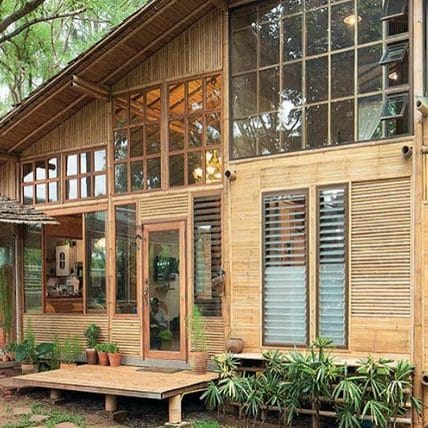
The bamboo house uses bamboo as the main structural and finishing material. Bamboo is renewable, lightweight, and naturally flexible, offering great earthquake and wind resistance. In parts of southern Nigeria and eco-resorts, bamboo is used for cottages, verandas, and decorative elements. Modern designs combine bamboo with concrete or mud to improve durability while keeping a rustic, sustainable aesthetic. As interest in green building grows, bamboo homes are becoming an attractive eco-friendly entry in the list of types of houses in Nigeria.
Also Check: Certificate of Land Ownership in Nigeria: Meaning, Process, and How to Get Yours Legally
Types of Houses in Nigeria: Final Thoughts
Nigeria is a country blessed with diverse cultures, climates, and creativity, and this diversity reflects beautifully in its housing styles. From the traditional mud huts and thatched roofs of rural communities to the modern duplexes, bungalows, and luxury apartments seen in cities like Lagos and Abuja, each home type tells a story about its people, environment, and lifestyle.
Understanding the different types of houses in Nigeria helps you appreciate how innovation and tradition coexist. Whether it’s a bamboo eco-house, a container home, or a classic family bungalow, Nigerians continue to find smart, sustainable, and stylish ways to define modern living.
As urbanization grows and architecture evolves, new housing trends keep emerging, but one thing remains constant: the Nigerian home is more than just a building; it’s a symbol of identity, comfort, and pride.


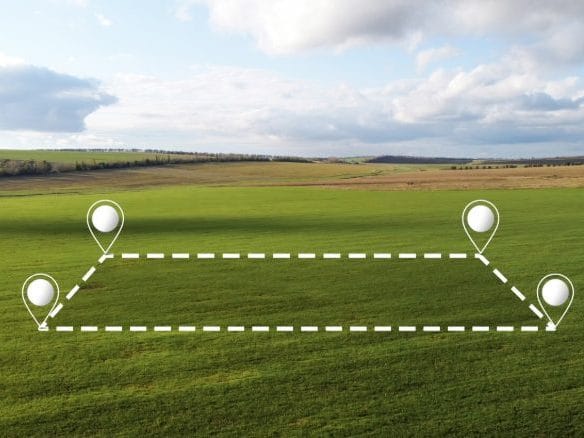

Join The Discussion